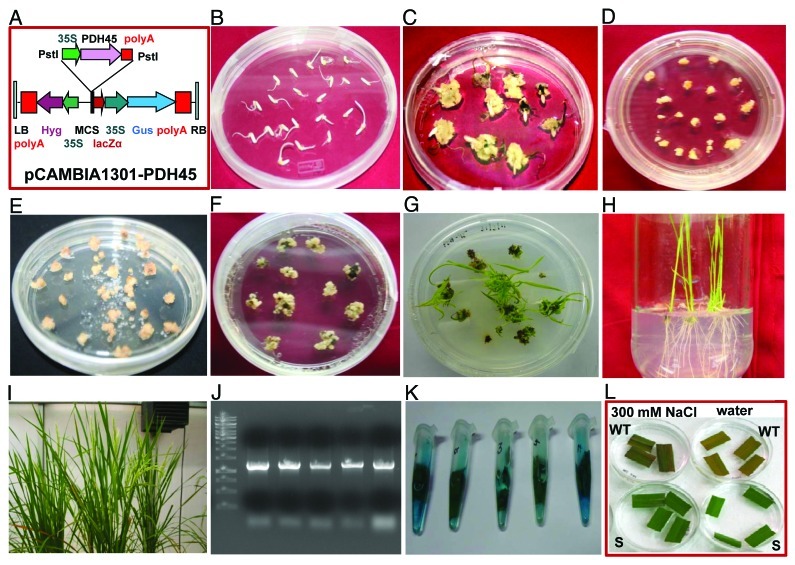Figure 1. Different stages of developing transgenic PDH45 plants from preparation of gene construct to plant regeneration in indica rice variety, IR64 and confirmation of gene (PDH45) integration by PCR, Gus assay and Leaf disc senescense assay. (A) Structure of T-DNA region of pCAMBIA1301 containing PDH45 gene (1.2 kb) in PstI restriction enzyme site of MCS region with CaMV35S promoter and poly A terminator (pCAMBIA1301-PDH45). (B) Mature seeds of IR64 in callus induction medium for 20 d. (C) After 20 d of calli initiation. (D) Calli sub-cultured on fresh callus induction medium for 2 d. (E) Calli in co-cultivation media after transformation (F) Selection of transformed calli on selection medium having hygromycin 50 mg/l. (G) The resistant calli in MS regeneration medium and emerging shoot buds on regeneration medium. (H) Shoots in rooting medium. (I) Hardening of plant and transfer to soil. (J) PCR analysis of the transgenic (T1) lines by the use of gene (PDH45) specific forward and reverse primers. Lane M is 1 kb ladder. Lanes 1–5 are, rice transgenic lines (L1, L2, L3, L4 and L5 respectively) showing the required amplification (1.2 kb). (K) Visualization of gus activity in the leaf tissue of transgenic lines by using 1 mM 4-methyl-umbelliferyl β-D glucuronide. (L) Leaf disk senescence assay for salinity tolerance in transgenic rice plants in 300 mM NaCl and water. Transgenic lines showing high salinity tolerance as compared with WT.

An official website of the United States government
Here's how you know
Official websites use .gov
A
.gov website belongs to an official
government organization in the United States.
Secure .gov websites use HTTPS
A lock (
) or https:// means you've safely
connected to the .gov website. Share sensitive
information only on official, secure websites.
